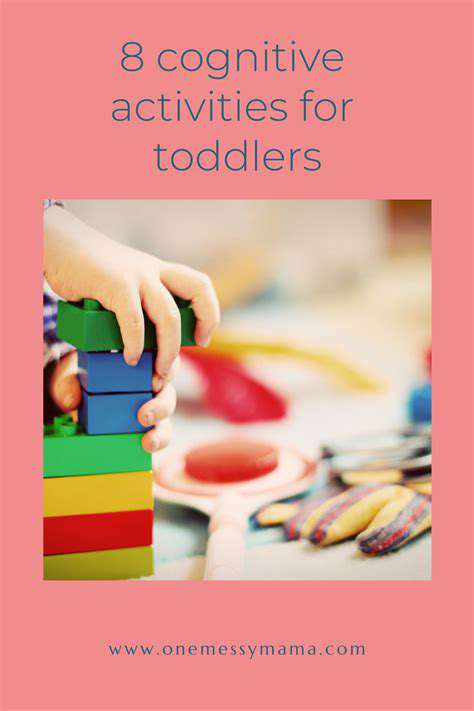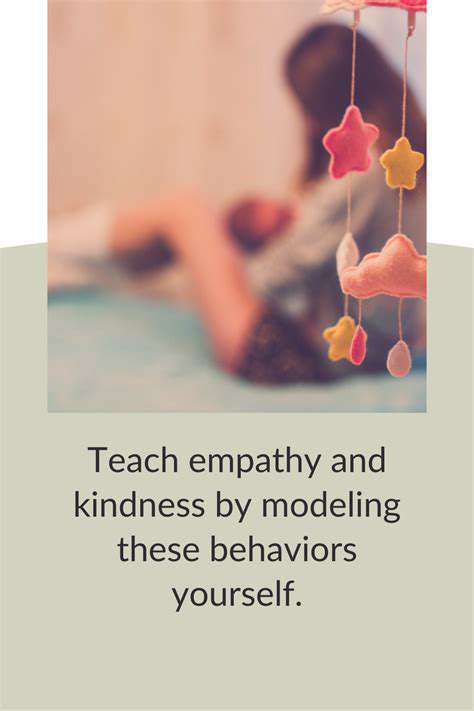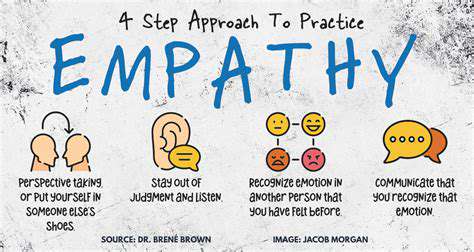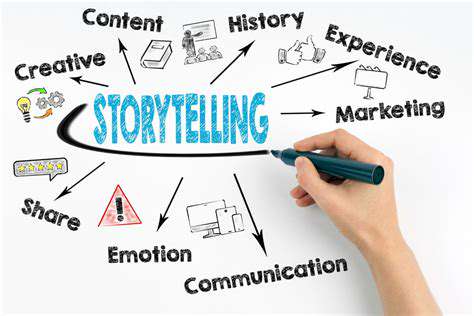Coping with Developmental Milestones: A Parent's Guide
Recognizing the Spectrum of Developmental Milestones
Understanding Developmental Milestones
Developmental milestones serve as important indicators of how a child is progressing in areas like physical growth, thinking skills, social interactions, and emotional maturity. While these markers offer general expectations, it's vital to recognize that each child follows their own unique timeline. Grasping this concept helps caregivers spot possible delays while appreciating natural variations in development.
Tracking these progress points enables early support when needed, giving children the best chance to flourish. This forward-thinking approach can make a profound difference in a child's long-term happiness and achievements.
Physical Development Milestones
Physical growth includes both large movements like crawling and running, along with finer skills such as picking up small objects or holding a spoon. Watching how a child moves and comparing their abilities to typical ranges for their age helps identify any significant differences. Spotting these variations early allows for helpful interventions that can guide proper development.
A child's physical capabilities offer important clues about their overall growth. Regular observation remains the best way to catch any concerns quickly, making support more effective when provided sooner rather than later.
Cognitive Development Milestones
Thinking skills cover how children learn, solve problems, and understand their world. This includes language growth, memory development, logical reasoning, and grasping how actions lead to results. These mental abilities form the foundation for all future learning. Monitoring cognitive progress helps determine if a child is on track or might benefit from additional help.
Keeping tabs on thinking milestones proves especially valuable for identifying learning differences at stages when support can make the greatest impact. Early assistance often leads to better academic outcomes down the road.
Social-Emotional Development Milestones
Emotional growth involves how children form relationships, express feelings, and understand others' emotions. These skills help them navigate friendships and social situations throughout life. Observing how a child interacts with peers, manages emotions, and shows empathy provides important insights.
Recognizing these social-emotional markers allows caregivers to use more effective parenting approaches. This focus helps children develop the relationship skills they'll need to succeed in school, work, and personal connections later in life.
Language Development Milestones
Communication growth stands as a cornerstone of childhood development. It includes both understanding words (receptive language) and expressing thoughts (expressive language). Tracking vocabulary expansion, sentence formation, and overall conversation skills helps gauge progress. Early attention to language development often leads to stronger communication abilities over time.
Individual Variations and Support Systems
Every child moves through developmental stages differently, with a wide range considered normal. Genetics, environment, and personality all influence this process. Understanding these natural differences helps adults provide the right kind of encouragement for each unique child.
Families and caregivers serve as essential supporters in a child's growth journey. Access to helpful resources - pediatricians, therapists, educational specialists - can significantly shape developmental outcomes. Creating strong networks of support contributes greatly to a child's overall well-being.
Recognizing Potential Delays or Challenges
While development varies widely, being aware of possible delays matters greatly. If concerns arise about a child's progress, consulting a healthcare professional offers the best next step. They can provide tailored advice and suggest appropriate interventions when needed. Early action often improves outcomes dramatically, helping children achieve their fullest potential.
Seeking expert guidance promptly allows for timely support that can address developmental concerns effectively. This proactive stance helps ensure children get what they need to thrive.
Addressing Potential Delays or Challenges

Identifying Potential Delays
Spotting possible delays early forms the foundation for successful management. This requires careful evaluation at each project phase, from initial planning through final execution. External factors like unexpected resource shortages or market changes deserve particular attention. Thorough preparation, including backup plans, reduces risks associated with potential setbacks. Appropriate resource distribution and realistic schedules remain crucial for meeting project goals.
Clear understanding of project parameters proves essential. Well-defined tasks, responsibilities, and deadlines help identify where delays might surface, allowing teams to take preventive measures before issues arise.
Analyzing Root Causes of Delays
After identifying potential delays, teams must investigate underlying causes. This deep dive examines specific factors contributing to timeline issues - whether resource limitations, communication problems, or external influences. Pinpointing root causes represents the critical first step toward developing effective solutions. Comprehensive analysis should incorporate input from all stakeholders and verifiable data.
Developing Contingency Plans
Creating backup plans in advance stands as a hallmark of good project management. These alternative approaches prepare teams to handle potential delays with minimal disruption. Developing these plans before problems emerge allows for smoother transitions when challenges occur. Preparedness helps maintain project momentum even when unexpected situations arise.
Effective contingency plans specify actions, timelines, and responsible parties. Clear definitions keep teams organized and focused during uncertain periods.
Implementing Mitigation Strategies
Putting solutions into action represents the next critical phase in delay management. These strategies target root causes identified during analysis to minimize schedule impacts. Possible approaches include redistributing resources, adjusting deadlines, or adopting alternative methods to overcome obstacles. Forward-thinking measures significantly reduce delay likelihoods.
Ongoing assessment of implemented strategies ensures their effectiveness. Regular progress reviews and strategy adjustments help keep projects on course.
Communication and Collaboration
Effective teamwork and open dialogue play pivotal roles in addressing delays. Maintaining clear communication channels for updates, challenges, and potential obstacles keeps all participants informed and aligned. Transparent exchanges build trust and foster cooperation - essential ingredients for project success. Keeping communication lines open prevents misunderstandings and enables rapid problem-solving.
Escalation Procedures
Establishing clear protocols for major delays ensures structured responses when standard solutions prove insufficient. These procedures outline steps for handling critical situations. Defining escalation paths in advance provides clear guidance during high-pressure situations, reducing project failure risks. Well-designed procedures enable rapid response to serious issues.
Monitoring and Evaluation
Continuous progress tracking helps identify and address delays early. Regular status reports, performance assessments, and stakeholder feedback maintain project visibility. Close monitoring detects timeline deviations promptly, enabling timely corrections. Vigilant oversight allows teams to address potential problems proactively, preserving project success.
Celebrating Progress and Embracing the Journey
Understanding Developmental Milestones
Developmental milestones mark significant steps in a child's growth across physical, cognitive, social, and emotional domains. These achievements - from first steps to initial words to early friendships - help caregivers monitor progress and identify potential support needs. Remembering that each child develops uniquely, with natural variations, remains paramount.
Appreciating the broad range of normal development helps avoid unnecessary comparisons. Focusing on individual progress rather than rigid timelines creates a more positive, supportive environment where children can develop confidence and skills.
Recognizing Individual Differences
Each child brings unique genetic, environmental, and experiential factors to their developmental path. Valuing these differences helps create nurturing spaces where children feel accepted. Respecting individual timelines reduces stress for both children and caregivers while allowing each child's abilities to unfold naturally. Every small achievement deserves recognition as part of the larger growth journey.
Navigating Potential Delays
While developmental variations are normal, persistent delays in certain areas may require attention. Consulting pediatricians or specialists when concerns arise allows for early support that can significantly influence outcomes. The sooner potential challenges are identified, the more precisely support can be tailored to meet a child's specific needs.
Supporting Healthy Development
Fostering growth requires safe, stimulating environments rich with positive interactions and appropriate resources. Providing varied learning opportunities through play, exploration, and social experiences supports well-rounded development. Thoughtfully designed environments that match a child's interests and abilities encourage natural skill development.
Celebrating Small Victories
While major milestones attract attention, everyday progress matters equally. Each new word, problem solved, or social connection represents meaningful growth. Acknowledging these smaller steps builds confidence and motivates continued effort, creating positive associations with learning and development.
Addressing Challenges with Patience and Support
Developmental paths often include bumps and plateaus. Responding with patience, seeking professional advice when needed, and maintaining consistent support helps children overcome obstacles. Access to support groups and expert resources provides valuable guidance during challenging phases. A positive, resilient approach models healthy coping strategies for children.
Embracing the Ongoing Journey
Development represents a continuous process without fixed endpoints. As children grow, their needs and abilities evolve, requiring flexible support approaches. Focusing on fostering curiosity, love of learning, and adaptive skills prepares children for lifelong growth and success. Celebrating the journey itself - not just destinations - creates meaningful developmental experiences.











